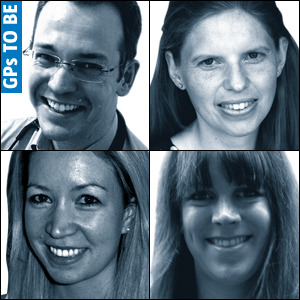GPs trainees are an asset, not a liability

A recent blog on the MDDUS website cheerfully depicts an entirely hypothetical scenario where a diagnosis of lung cancer may have been delayed by a (GP) trainee doctor’s poor awareness of NICE guidelines.
The blog goes on to describe how risk often increases as training progresses and trainees have less supervision – it essentially appears to put the willies up practices thinking about taking on a future GP.
Incensed with rage after reading the blog – I subject any patient with a cough to the ‘Registrar’s triad’ of isoniazid, montelukast and a two-week wait referral to the respiratory team – I felt obliged to offer a defence of GP trainees.
I wondered if there was any evidence that GP trainees are subject to more complaints or are proven to cause more errors than trained GPs, but there doesn’t seem to be much about. HSCIC data does not provide a breakdown of who is complained against in primary care and as this goes to print none of the defence unions have replied to my emails and late-night phone calls.
A Danish study carried out in 2013 found that GP professional seniority was positively associated with the odds of receiving a complaint (odds ratio 1.44 per 20 years of seniority; CI 95%1.04-1.98), suggesting that trainees are in fact less risky than those closer to retirement.1
Of course, the evidence is slim either way and many more mistakes are made than those formally complained about.
At the very minimum, a GP trainee in their first year must have completed medical school and foundation training. During foundation training a doctor will be formally assessed on at least 30 occasions by more senior doctors, and must provide written proof of competency within the foundation curriculum. Although not perfect, I am willing to bet it is a more robust and validated check of clinical ability than existed in the good old days.
As a GP registrar (a third-year GP trainee) I’ve enjoyed a further 24 assessments with a real-life GP, and a new primary-care curriculum for which further proof is needed of coverage. There’s also a knowledge-based exam and the infamous CSA. To meet these requirements, trainees must be au fait with evidence-based medicine – how many experienced GPs need to prove this on such a regular basis?
In essence – there are plenty of opportunities before and during training to identify those who are a few points short of a QoF target.
Perception of trainee risk in general practice is an interesting concept. On the one hand, general practice clearly holds uncertainty and risks unique to the speciality and therefore unfamiliar to the new trainee. On the other, many of the doctors to whom you refer your patients have much less experience than you may assume.
In my brief hospital career of three and a half years, I have covered for an otherwise occupied medical registrar and led neonatal resuscitation teams. But in professional terms I had barely stopped wetting the bed, never mind feeling wet behind the ears. It was unsettling to finish an ST2 placement by discharging a suicidal patient in the middle of the night, only to begin a GP placement the following week and spend a fortnight sat with the reception team.
The lead-up to and structure of GP training is such that trainees are supervised but nonetheless responsible for the clinical decisions we make.
Furthermore, GP trainees are afforded luxuries such as longer consultations and fewer patients per session to compensate for working in unfamiliar territory.
As a trainee, I am indebted to my trainers for their supervision, as should be the profession as a whole. Without training practices, there are not going to be any new GPs.
It seems unfair then, to give GP trainees such a cautionary label. GP trainees should be an asset to your practice, and there is no better time to adopt one of your own.
Dr Danny Chapman is a GPST3 in Exeter.
Reference
1 Søren Birkeland, Rene dePont Christensen, Niels Damsbo, and Jakob Kragstrup. Patient Complaint Cases in Primary Health Care: What Are the Characteristics of General Practitioners Involved? BioMed Research International, vol. 2013, Article ID 807204, 5 pages, 2013. doi:10.1155/2013/807204









